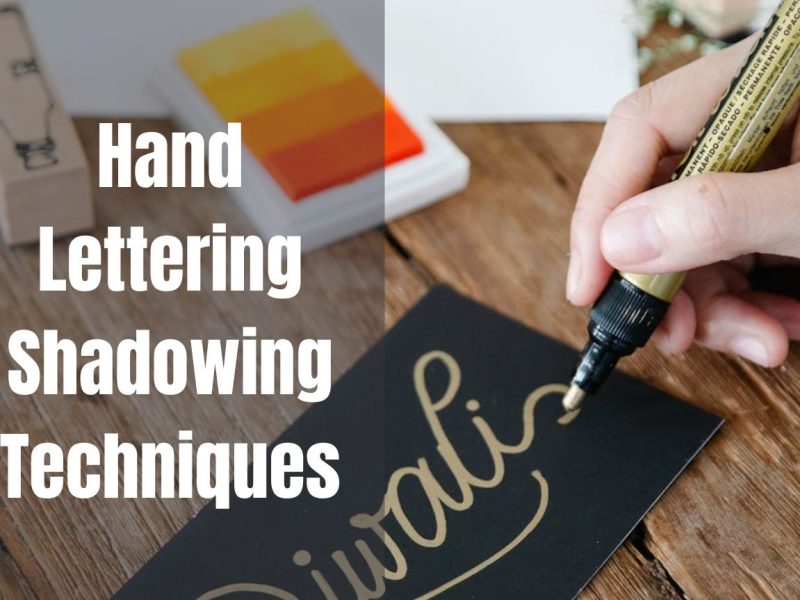Hand lettering is a captivating art form that combines creativity, patience, and skill. In a world where digital fonts dominate, the ability to craft beautiful letterforms by hand adds a personal touch and warmth to designs. Whether you’re a seasoned artist, a hobbyist, or a beginner, improving your hand lettering skills can open up a world of opportunities for self-expression and artistic growth.
Understanding the Fundamentals
1. Proper Grip and Posture
Mastering the proper grip and posture is crucial for achieving consistent and comfortable hand lettering. A relaxed yet controlled grip allows for fluid movements and prevents hand fatigue. Experiment with different pen/pencil holding positions until you find the one that feels natural and provides the desired control.
Posture is equally important. Ensure your workspace is ergonomically designed for optimal hand lettering. Adjust your chair height, desk angle, and lighting to minimize strain on your neck, shoulders, and back. Maintaining good posture will not only improve your lettering but also prevent long-term discomfort.
2. Mastering Letterforms and Strokes
Before diving into intricate lettering styles, it’s essential to understand the basic letterforms and strokes. Start by practicing letterforms like serifs, sans-serifs, and scripts. Pay attention to the distinct characteristics of each style, such as the thickness of strokes, curves, and flourishes.
Once you’re comfortable with letterforms, focus on mastering the basic strokes: upstrokes, downstrokes, and curves. Consistent practice of these fundamental strokes will help develop muscle memory and improve the flow and consistency of your lettering.
3. Exploring Different Tools and Materials
Hand lettering tools and materials can significantly impact your work’s quality and style. Familiarize yourself with popular tools like brush pens, calligraphy pens, and markers. Each tool offers unique characteristics and capabilities, so experiment to find the ones that best suit your preferences and lettering style.
Additionally, explore different paper surfaces and textures. Smooth papers may be ideal for precise lettering, while textured papers can add depth and character to your work. Don’t be afraid to venture beyond traditional materials and try new surfaces like wood, fabric, or glass.
Developing Your Style
1. Finding Inspiration
Inspiration is the fuel that ignites creativity and helps you develop a unique lettering style. Look for inspiration in typography, calligraphy, nature, architecture, and even everyday objects. Build a mood board or sketchbook to collect inspiring letterforms, color palettes, and compositions.
Analyze and deconstruct lettering styles you admire, understanding the techniques and principles behind them. This process will not only spark ideas but also help you refine your own artistic voice.
2. Practicing Consistently
Consistent practice is the key to improving any skill, and hand lettering is no exception. Set aside dedicated time for practice sessions, even if it’s just a few minutes each day. Establish achievable goals, such as mastering a new letterform or style each week, and track your progress to stay motivated.
Incorporate hand lettering into your daily routines by lettering quotes, grocery lists, or even labeling household items. This habit will reinforce your skills and make hand lettering a natural part of your creative expression.
3. Embracing Imperfections and Developing a Unique Voice
Perfection is an illusion in the world of hand lettering. Embrace the imperfections and variations that make your work unique and authentic. Lettering is a reflection of your personality, and those subtle imperfections are what give your work character and charm.
Experiment with different layouts, compositions, and color palettes to develop a distinctive style. Don’t be afraid to break rules and push boundaries – this is where true creativity thrives. As you continue to explore and refine your technique, your unique lettering voice will emerge, setting your work apart from others.
Advanced Techniques and Resources
1. Flourishing and Embellishments
Once you’ve mastered the basics, consider taking your hand lettering to the next level by adding flourishes and embellishments. These decorative elements can elevate your lettering and add depth and visual interest to your designs.
Learn techniques for creating swashes, flourishes, and decorative elements that complement your letterforms. Practice consistency and flow in your embellishments, ensuring they seamlessly integrate with your lettering rather than appearing as separate elements.
2. Digital Hand Lettering
In today’s digital age, hand lettering has seamlessly transitioned to the digital realm. Explore digital hand lettering tools like iPads and styluses, as well as specialized apps and software. Digital hand lettering offers flexibility, portability, and the ability to easily edit and refine your work.
While the principles of traditional hand lettering still apply, digital tools introduce a new set of techniques and workflows. Invest time in learning these tools and mastering the nuances of digital lettering to expand your creative horizons.
3. Resources for Continuous Learning
Continuous learning is essential for growth and improvement in any creative pursuit. Explore a variety of resources to expand your knowledge and skills in hand lettering.
Invest in books, workshops, and online courses taught by experienced lettering artists. These resources can provide valuable insights, techniques, and guidance tailored to your skill level and interests.
Additionally, join hand lettering communities and attend meetups to connect with like-minded individuals. Sharing your work, receiving feedback, and collaborating with others can inspire and motivate you to push your boundaries.
Follow inspiring artists and lettering accounts on social media platforms to stay updated on trends, and techniques, and to find a constant source of inspiration.
Conclusion
Improving your hand lettering skills is a rewarding journey that combines creativity, patience, and dedication. By understanding the fundamentals, developing your unique style, and exploring advanced techniques, you can elevate your lettering to new heights.
Remember, practice is the key to mastering any skill. Embrace imperfections, find inspiration in the world around you, and continuously seek opportunities for growth and learning. With perseverance and a passion for the art, you’ll be able to create stunning hand-lettered designs that captivate and inspire.
So, pick up your pen or brush, and let your creativity flow. The world of hand lettering awaits, and with each stroke, you’ll be one step closer to mastering this beautiful art form.



